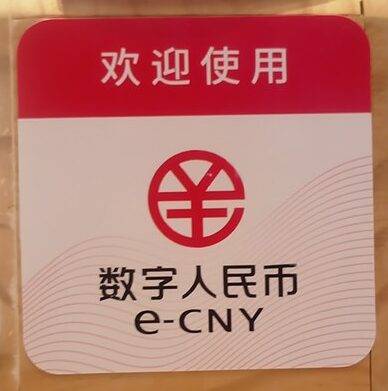In a groundbreaking development, China’s digital yuan has surpassed $1 trillion in transactions, outpacing popular stablecoins USDC and USDT. This milestone marks a significant achievement for the People’s Bank of China (PBOC) and highlights the growing acceptance and adoption of the digital yuan.
In this blog post, we will explore the factors contributing to this success, the implications for the global financial system, and what the future holds for digital currencies.

The Rise of the Digital Yuan
The digital yuan, also known as the e-CNY, is a central bank digital currency (CBDC) developed by the PBOC.
After more than a decade of research and four years of rigorous pilot testing across 17 regions, the digital yuan has demonstrated remarkable growth.
By the end of June 2024, the total transactions using the digital yuan had approached 7 trillion yuan, nearly equaling $1 trillion.
Factors Contributing to Success
Several factors have contributed to the digital yuan’s success:
- Extensive Research and Development: The PBOC has invested significant resources in developing the digital yuan, ensuring it is secure, efficient, and user-friendly.
- Pilot Testing: The digital yuan underwent extensive pilot testing in various sectors, including wholesale, retail, hospitality, culture and tourism, education, and healthcare. This helped identify and address potential issues before a broader rollout.
- Government Support: The Chinese government has been a strong advocate for the digital yuan, promoting its use and integration into the financial system.
- Technological Advancements: The digital yuan leverages cutting-edge technology to support both online and offline transactions, making it versatile and accessible.
Implications for the Global Financial System
The success of the digital yuan has several implications for the global financial system:
- Increased Financial Inclusion: The digital yuan has the potential to enhance financial inclusivity by providing access to banking services for underserved populations.
- Improved Payment Efficiencies: The digital yuan can streamline payment processes, reducing transaction costs and increasing efficiency.
- Enhanced Consumer Spending: By making transactions more convenient, the digital yuan can boost consumer spending and stimulate economic growth.
- Environmental Benefits: The digital yuan supports environmentally friendly practices by reducing the need for physical cash and associated production and transportation costs.
Comparison with USDC and USDT
The digital yuan’s transaction volume surpassing that of USDC and USDT is a testament to its growing adoption and usage. As of June 2024, USDC’s transactional volume was approximately $5.38 billion, while USDT’s stood at about $45.16 billion. In contrast, the digital yuan’s volume remains significantly higher, showcasing its widespread acceptance.
Future Prospects
The future of the digital yuan looks promising, with several cross-border digital currency projects underway to improve global payment systems. The PBOC is also exploring ways to expand the digital yuan’s applications and enhance its functionality. As more countries develop their own CBDCs, the digital yuan’s success could serve as a model for others to follow.
Conclusion
China’s digital yuan surpassing $1 trillion in transactions is a significant milestone that underscores its growing importance in the global financial landscape.
With its extensive research, pilot testing, and government support, the digital yuan is well-positioned to continue its upward trajectory. As the world moves towards digital currencies, the digital yuan’s success story offers valuable insights into the future of money.
